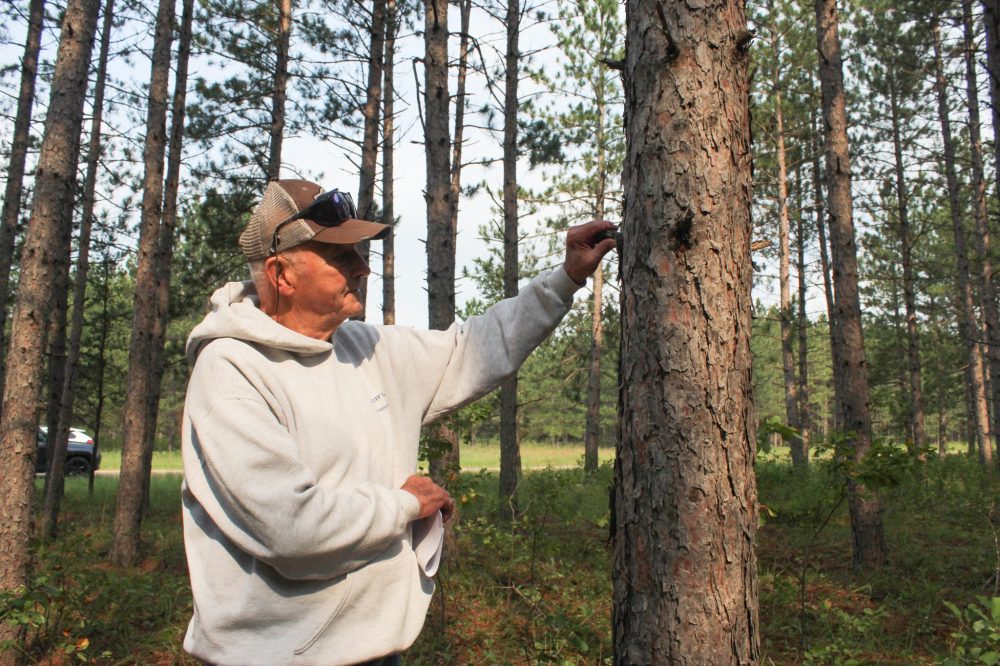Forestry tour takes retired Manitoba officials back to roots
Advertisement
As Lloyd Yarn reaches out to touch a red pine tree’s bark, he can’t believe it’s still standing.
Yarn was a provincial forester who helped plant trees near Woodridge in 1967. Tuesday was the first time he’s seen the trees since they were saplings in fresh soil.
“You think back when you come out of school and you’re planting little trees, and you figure ‘Will they ever grow?’” he told The Carillon. “When you look at something like this, you say, ‘I did this. I made a difference.’

The 87-year-old worked as the regional forester in the area, which meant he was “in charge of the trees.” Yarn oversaw logging, planting and fire management as regional director. He worked his way up to becoming chief of silviculture for Manitoba and retired in 1994 after working 32 years in the province’s forests.
Yarn was among 19 other retired provincial foresters who toured commercial tree plantations and private sawmills in Southeastern Manitoba.
Part of his job was also fighting wildfires. When he sees the fires across Manitoba and Canada, it is both surreal and scary, Yarn said.
“I understand how it’s exploding because I’ve encountered it, but not to the the extent that it’s happening right now,” he said. “I’m just glad I’m not 20-years-old because this is the new normal.”
Stan Kaczanowski, who also served as regional forester, helped organize the tour group. He said it first started with getting three or four people to see the forests they used to work in. But when other people caught wind of idea, that group quickly grew.
“Everybody wanted to see these things, but get together too,” he said. “Seeing what you did 40-50 years later, we don’t always get a chance to do that. So this really, really helped.”
Kaczanowski describes the foresters as a family. The tour group included former heads of forest management, regional directors and deputy ministers. He said while the group has a lot of knowledge and experience between them all, that knowledge is threatened because it disappears with the people as they age.
Throughout his career, he’s seen the number of pulp mills and sawmills shrink, such as the Pine Falls Paper Mill which closed in 2009.
Because much of eastern Manitoba’s trees are part of the boreal forest, he said its life cycle depends on fires. For some pine cones, it takes high heat just to open and release seeds, he said.
“Sooner or later, you got to burn it. It’s got to burn to come back as a healthy new forest,” Kaczanowski said.
The trip to the forests couldn’t have happened last month because wildfires forced people in the area to evacuate, he said.
Kaczanowski said he had to evacuate on May 13 when wildfires tore through the Whiteshell Provincial Park. While fires are sometimes necessary for forest growth, the human cost is still difficult to bear when people lose their homes, he said.
